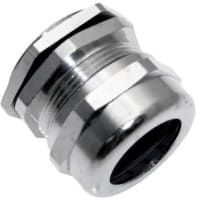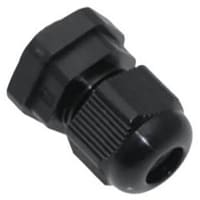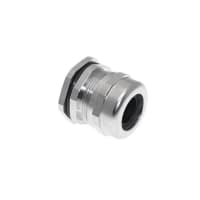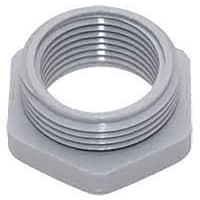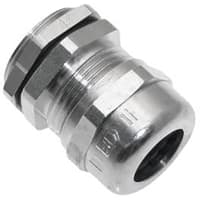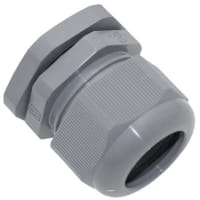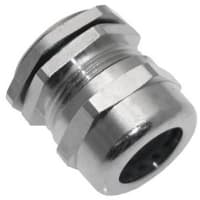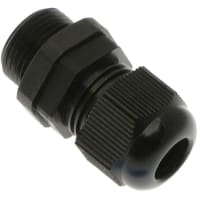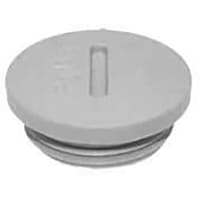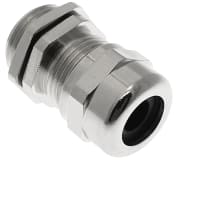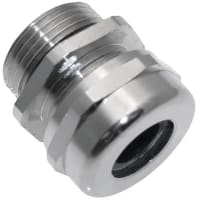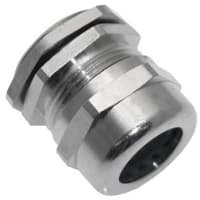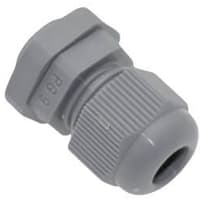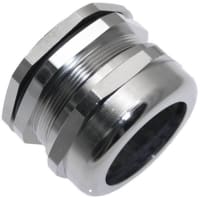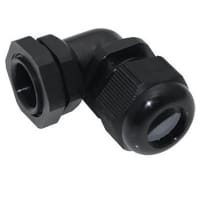

Strain Relief
Depending on application, wire strain relief is an important element of proper cable management. There are several wire strain relief methods, including the use of cable glands to secure cables to equipment while performing several other protective functions. At RS, we stock a vast range of related products to help you attach, secure, and protect vital cabling.
We stock products from trusted manufacturers such as SAB, Hubbell Wiring Device-Kellems, and American Electrical, Inc. We also stock popular Heyco cable glands, SWA glands, plus products from our high-quality, cost-efficient RS PRO range.
Browse our selection below and apply filters such as cord diameter, material, and thread size to find the right solutions for your application. Most listings feature a PDF data sheet to provide greater in-depth technical information. Ready to order? Place yours online for quick, convenient shipping.
Please get in touch if you have questions. You can also read more about the importance and key types of wire strain relief below.
Why is wire strain relief important?
Strain relief is one part of cable management and focuses more on protection and securement than organization.
It's important to protect any type of cable from stress or damage, especially in harsh, high-stakes industrial environments. Robust wire strain relief solutions then, either in or outside an enclosure, protect cable from unnecessary strain due to bending or pulling, or from sharp cable sheathing. As a knock-on effect, this protects people and equipment from exposure to electrical current.
There are various wire strain relief methods available to suit different environments and cable. One of the primary types is a device called a cable gland, which in securing cable to equipment also performs other important functions including:
- Environmental protection from dust and moisture for both cable and enclosure
- Earth continuity in the case of a circuit fault
- Pull out resistance under mechanical pressure
- Extra sealing where high ingress protection is required
Wire strain relief can be used with different types of cable including power, data, control, and telecommunications.
What are some of the different wire strain relief methods?
Cable gland
Cable glands are known as cable strain reliefs in certain regions, as well as cable connectors or fittings, or cord grips. Regardless of terminology, these items are mechanical cable entry devices. They attach to the ends of electrical cable to secure it to equipment and provide adequate sealing, as well as strain relief and environmental protection.
Cable gland sizing and material can vary depending on cable diameter and its fitting environment. They typically protect cables between 1mm and 75mm in diameter, while metal alloy and plastic are among the materials available. Cable glands also vary in mounting method and straight or angled configuration.
Cable grommet
Cable grommets are attachments used to cover sharp edges in materials such as metal, wood, or plastic. They typically come in a ring or strip shape, manufactured from rubber or metal.
Grommets provide aesthetic and functional benefits, protecting cables and pipes from cuts and friction damage in fittings they pass through, such as electrical back boxes. Grommets can also protect cables from dust and water damage, as well as protecting against pulling damage.
Strain relief bushing
Similarly, wire strain relief bushings are simple fittings that secure, protect, and insulate cables. They protect against various forces a cable might be subjected to, including push, pull, and twisting forces which could strain or loosen the cable. They're easy to install and come in several styles to suit different cable shapes.
Choosing a wire strain relief product
As mentioned, there are many wire strain relief items available, all coming in different sizes and materials to suit different uses. Regardless of industry, be it aerospace, power, telecommunication or other, key questions to ask when selecting yours include:
- What type of cable is it for, for example, armored or unarmored?
- What is the diameter of the cable?
- Is the cable indoor or outdoor?
- Could it be subjected to factors such as water, variable temperature, dust, chemicals, or explosions?
Your answers will determine the correct size and material for your strain relief solution.
Why use RS for your wire strain relief needs?
Strain relief is a core part of a cable management plan. Our product selection allows you to secure and protect the cabling your operation relies on, minimizing damage and disruption.
Use our filters to search for the items you need, be it SWA glands, another specification, or a specific manufacturer. Once you've homed in and placed your order online, as one of North America's largest distributors, we guarantee efficient shipping.
Feel free to contact our experts if you have any questions. Be sure to browse our expert advice hub too for helpful industry guides and updates.
